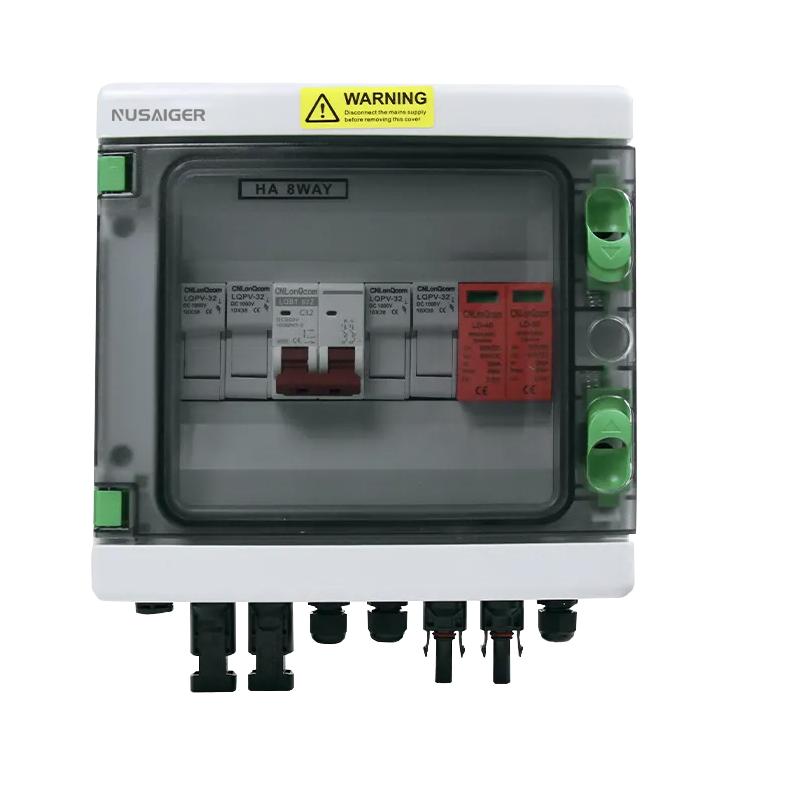Innovative Features of Modern PV Combiner Boxes: What Installers Should Know
As the global demand for solar energy continues to surge, the evolution of photovoltaic (PV) system components has kept pace, particularly when it comes to PV combiner boxes. Today’s combiner boxes have undergone significant innovation, offering more than just power consolidation—they are becoming intelligent nodes in the solar ecosystem. This article dives into the key features and innovations shaping modern PV combiner boxes, helping installers and engineers choose more efficient, safer, and smarter systems.
1. Smart Monitoring Capabilities
One of the most exciting developments is the integration of intelligent monitoring systems directly into the combiner box. These allow real-time data collection on current, voltage, and temperature across strings. This information can be transmitted via RS485, Modbus, or Ethernet to central monitoring software, improving system visibility and enabling predictive maintenance.
Key Benefits:
- Early fault detection and response
- Remote diagnostics and alerts
- Improved energy yield through performance optimization
2. Enhanced Safety Features
Safety is paramount in any electrical system, and PV combiner boxes are increasingly incorporating components that improve fault handling and system protection. These include:
- High-quality DC circuit breakers or fuses with higher interrupt ratings
- Surge protective devices (SPDs) with thermal disconnection
- Arc fault circuit interrupters (AFCIs)
- Ground fault detection and protection mechanisms
These innovations help reduce the risk of fire, equipment damage, and personnel injury, especially in high-voltage and high-temperature environments.
3. Modular and Scalable Designs
Modern PV installations—especially in commercial and industrial sectors—require flexibility. The newest combiner boxes offer modular designs with removable components, plug-and-play connectors, and optional add-ons like string monitoring modules or hybrid AC/DC sections.
These configurations make it easier to:
- Customize boxes for specific project needs
- Expand capacity in future upgrades
- Streamline installation and reduce labor costs
4. Better Thermal Management
Heat is a major enemy of electronic systems. New PV combiner box models are being designed with better passive cooling, improved air flow channels, and in some cases, active cooling with fans or heat sinks. These improvements are crucial in hot climates or enclosed installations.
Proper thermal management extends the lifespan of components and ensures consistent performance under varying environmental conditions.
5. Higher Ingress Protection (IP) Ratings
Modern boxes often meet IP65 or even IP67 standards, ensuring protection against dust and powerful water jets or immersion. This level of protection makes these combiner boxes suitable for outdoor or harsh environments such as deserts, industrial zones, or coastal regions.
6. Integration with Energy Storage Systems (ESS)
As solar-plus-storage becomes more mainstream, combiner boxes are being developed with integration points for DC-coupled battery systems. This includes shared monitoring, switching, and safety components to handle multi-directional current flows efficiently.
7. UL and IEC Compliance Enhancements
Compliancy with updated international standards such as UL 1741, UL 3730, IEC 61439, and IEC 62109 is now a standard feature. Manufacturers are designing boxes with enhanced labeling, traceability, and documentation for inspectors and engineers.
8. Aesthetic and Structural Upgrades
Some manufacturers now offer combiner boxes with sleeker, more compact designs that are not only functional but also aesthetically improved for visibility or rooftop integration. Materials have shifted from plain steel to high-strength polycarbonate, stainless steel, or aluminum alloy for durability and weight savings.
Conclusion
The PV combiner box is no longer just a junction device—it’s becoming a critical smart and safety-enhancing component of solar energy systems. Whether you’re a system integrator, EPC contractor, or solar installer, understanding these modern features will help you design and deploy more reliable, efficient, and compliant PV systems. As technology continues to evolve, staying informed about these innovations will provide a competitive edge and ensure the long-term success of your solar projects.



